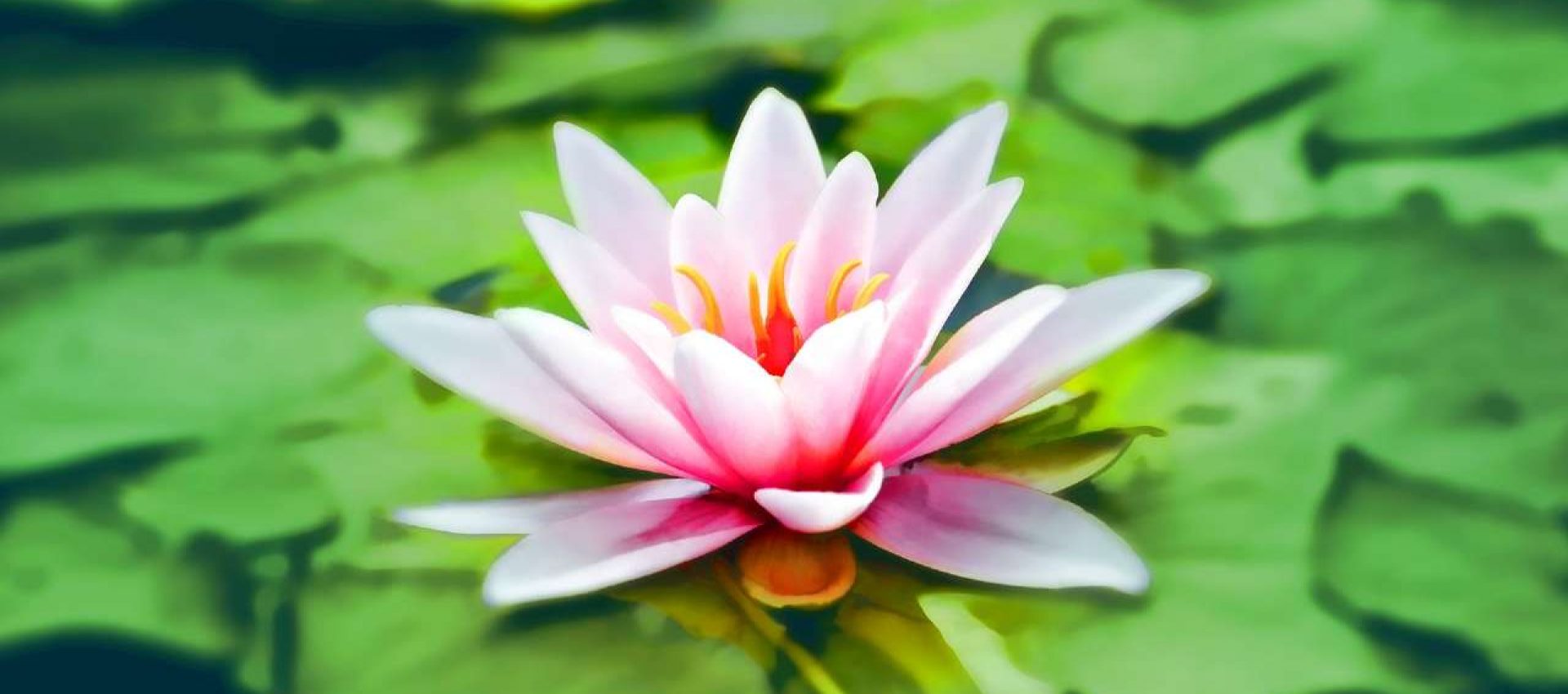The Science of Meditation

By Dr. Robert Leichtman
Meditation is a process that has many historical roots and applications. Many employ it just to relax and briefly escape from a stressful reality, hoping that this tranquility will permeate their life. However, meditation is more than this. Meditation is a concept and practice that includes many diverse types and applications.
Like clothing, meditation also comes in many styles, colors, and uses. Both clothing and meditation can serve our mundane needs as well as more special roles.
Clothing becomes significant and diverse when special uniforms are required for our careers. Different types of clothing are needed as protective gear for wet or very cold weather—or even space travel. Yet among all these uses, there are some common features in both categories. In clothing, for instance, there must be space to insert arms, legs, and head. Buttons, zippers, Velcro, or ties are necessary to hold together the parts of the fabric. To these core requirements for clothing are then added all the superficial stylistic details of color, accessories, special fabrics and the like. The casual observer may obsess on these details and not become aware of the underlying structure and principles of effective meditation.
Just as clothing comes in diverse categories and styles, meditation types are also available in many formats. However, these styles of meditation will have a core of common factors and procedures that make them effective.
While the styles of meditation are many, “serious people” consider only a few to be the “right and proper” type. Like religion, there are those who insist there is only one discipline that deserves to be regarded as valid. Unfortunately, much good is lost by being too exclusionary about these definitions and loyalties.
Goodwill and charity are universally praised as major virtues. The Science of Meditation also includes universal themes and uses. The generic activities of meditation consist of a refined and subtle activity of our consciousness. While the purpose of our individual meditation can range from the mundane to the sublime, there remains an inner process that is essential for effectiveness. The lack of understanding about the inner details of meditation has led to unnecessary restrictions in meditation and its potential benefits.
Part of these restrictions imposed on meditation stem from those who assert that the proper use of meditation is only to seek the sublime; that there is no other goal worthy of the practice. Others minimize their meditation by focusing too much attention on the accessories to meditation. Factors such as our physical posture, the presence of certain music, candles, and scents – while useful for some – are not an essential element of the core principles. Still others reduce the value of their meditation by focusing excessively on relaxing and focusing the attention; these are of use primarily to prepare for the meditative state; they are not meant to be substituted for the meditative experience.
Despite these restrictions on how some authorities define meditation and apply its practices, there remains an extremely wide spectrum for the use of meditation. In almost every type, common principles and steps occur in the meditative process. Many who practice meditation are not completely familiar with this template, and thus may miss out of some of the benefits of their meditation. The difficulty often lies not in the intelligence or sincerity of the meditator. Rather the problems lie in the rigid traditions that are often imposed on the way meditation is practiced. Meditation is an art and science that is rich with possibilities that merit study by any serious meditator. There is much more to meditation than achieving a momentary state of peace and bliss.
Behind every structure, whether an office building or a protocol for performing a complex task, there exists a real or implied set of engineering principles for them. There is a system of basic rules and orderly activities, a template, that enables success. The same applies to the operation of consciousness in effective meditation.
While meditators often seek to engage the vagueness of abstract forces and mystical elements, a rational order for these subtle activities is available. In effect, a Science of Meditation exists. While it is commonly ignored, sincere meditators will benefit from knowing more about it – even if they use meditation only for its minor benefits.
Phases of Meditation
There are distinct steps or phases of the meditative process. Many engage only the first few steps of meditation, often failing to experience the additional advantages that are possible. Others ignore any rational approach to meditation in the conviction that this is unnecessary or even counterproductive. Yet there is a progression of changes in the focus and activity of our consciousness that, thoughtfully engaged, will lend efficiency to the meditative process. More importantly, they can lead to the profound realizations that only meditation can offer.
The simple benefits of meditation can be achieved by ordinary naps, hypnosis, guided imagery, and relaxing to music. Some of these activities may embrace the deeper phases of meditation, but more as an accidental event. Sincere meditators will need to know the exact phases of meditation and the special benefits of each to make the most of their experience. Otherwise, many individuals will pause to enjoy the tranquility and comfort of an early phase and never go on to the greater experience and uses that are possible.
The phases of a meditative experience obviously begin with preparation and relaxation, although many choose this state as their objective. The later phases involve immersion in the Higher Self, but unless the earlier steps are engaged, the immersion may be diverted into the dream and wish department of the subconscious. While meditation is a wholly subjective process, there is a gentle discipline and order that can be used to create an efficient and effective meditation and result.
These phases of meditation naturally overlap each other and yet can be distinguished as follows:
- Relaxation and gathering of attention
- Detachment
- Attunement
- Immersion
- Contemplation and Integration
What is meant by relaxation and gathering attention?
Relaxation and the focusing of attention are needed primarily at the level of the mind and the emotions. The body loves to relax if you just allow it to be. It already knows how, and this is one of the most successfully rehearsed behaviors we perform every time we nap or fall asleep. It is our fussy mind and churning emotional concerns that usually need the most relaxing.
Some seek this relaxation by focusing attention on observing our breathing or mentally pronouncing a word or phrase. These are primarily concentration exercises. They have their usefulness, but should be regarded as part of the preparation for meditation – not the final stage. Others recall a memory, a prior mental or emotional state, or a real or imaginary place, that becomes a seed for relaxation, tranquility, and contentment. Guided imagery is often successful for this.
The important point is that relaxation of mind and body is just the doorway to the meditative experience, it should not take up the majority of our time devoted to meditation. The only exceptions are those who are not yet familiar with the practice of meditation and need some practice to perform this step.
There is an additional warning about this phase of preparation. Some will assume the state of relaxation must be very deep, near to being unconscious. This is not only unnecessary, but very deep relaxation can diminish the meditative experience by getting too close to the edge of sleep. Naps can be healthy, but they do not yield the proper experience of meditation. The ability to retain a relaxed alertness is essential to the effective meditative experience.
The place and other physical conditions for meditation is a matter of personal choice. Our posture, which way we face, the presence or absence of candles, and incense are not important unless you give them special value. Ultimately, it is better to be able to meditate successfully in a wide variety of places and conditions so we do not limit our self to only one narrow option.
Very often, the most effective way to relax both the body and mind is the effective use of the practice of detachment. This is the second phase or step of meditation and may include relaxation.
What is meant by detachment?
Detachment is an ancient and very useful practice that seeks to discriminate between what our senses tell us versus our ability to acknowledge this information. Detachment allows us to witness and comprehend what we are experiencing through our seeing, feeling, or hearing. This can include a dispassionate observation of memories we recall, recurring fears and frustrations, as well as the jumbled wanderings of our imagination. The value of Detachment is to back away from the products of our mind (memories, feelings, desires, and stray thoughts) so we can concentrate our attention on the ability to observe, direct, and comprehend what is happening in and about us.
Detachment is not the same as being disconnected from any awareness of what is occurring. Disconnection can be achieved, but this state aborts any possibility of learning much from our meditative experience by turning off our awareness mechanism. The qualities, support, and guidance of our Higher Self may come to us, but we will not be able to register it if we are disconnected.
The whole purpose of detachment is to identify with a deeper and more primary part of our awareness. This is the part of our consciousness that can quietly and calmly register what happens to us rather than being immersed in the outer level of our experiences. When we achieve this state to some degree, we move away from our superficial reactions and habitual responses to outer situations, past or present. As a result, we can shift our awareness to being in a calm state of mind in which we are less passionate and more objective. This is the state where we have greater ability to sort out what is happening or has occurred in our experiences.
Detachment is also the state of consciousness that is most able to receive new perspectives, beliefs, attitudes, and expectations. Since detachment removes some of the clutter of the mundane levels of our outer experiences, it clears the way to entertain what is new and subtle.
Detachment may seem to be an ambiguous process that is foreign to most people, but this is not true. When we choose to override an urge to take a break, and instead, continue to complete our tasks, we are practicing detachment from our sensations and cravings for comfort and rest. When hear or see something that annoys us but choose to be polite and keep the peace, we are practicing detachment.
When we identify with our capacity to be aware of our choices and ability to engage them, we are practicing detachment. This is the state of consciousness in which we can acknowledge the ability to observe and direct our behavior versus being immersed in sensations, feelings, and beliefs. As we achieve this state of awareness, we also move beyond any minor anxieties or obsessions of the personality. The body automatically relaxes as this is achieved.

What is meant by attunement?
The phase of attunement is where we begin connecting to a higher state of awareness and consciousness. Commonly, meditators will seek attunement to a state of peace, contentment, or awareness of the subtle. This is the stage that enables discovery and exploration of new insights, and experiences of love, joy, strength, and other virtues.
Many meditators deprive themselves of the possibilities inherent in this phase by becoming too passive. It should be noted that some authorities recommend complete surrender to the Higher Self at this point. There must be no activity of our mind or lower self in the false assumption that the personality can only interfere with the Higher Self. Those who hold to this belief need to understand that there is no law against the quiet aspiration to seek a closer relationship with the core of our life energies and identity. In addition, there is some danger that passive surrender can too easily lead us to the wish and fantasy department of our subconscious.
Virtual emptiness in our awareness is not the ideal state in which to be receptive to the influences of the Higher Self. We need to be somewhat awake and alert to register what the Higher Self can provide. If we are not present mentally to receive, we will miss what is offered.
The process of attunement requires some subtle action our part – something more than being passive and empty. Most commonly this consists of the gentle use of devotion, gratitude, trust, curiosity, aspiration, and dedication to the Highest.
Devotion tends to be the most popular wavelength used to link with the Higher Self. There are, however many additional tools available for making this attunement. Devotion and gratitude tend to connect the emotions of the personality to the Higher Self. While this is desirable, it is our trust and curiosity that more often connects the mind to the wisdom of the Higher Self. Dedication to the highest tends to link us to the purpose and meaning of the Higher Self. Some imbalances may develop unless we use these additional tools for seeking attunement to the Higher Self.
Many rely too much on devotion and proceed to idolize the Higher Self or some major spiritual being or quality. This can deepen the experience but can simultaneously distance us from meaningful interaction with what or who is idolized. Idolatry tends to place the object of veneration beyond our ability to interact with it and engage it. Effective meditation operates most effectively when a working relationship with the Higher Self is established. This is the type of connection that leads to the enrichment and enlightenment of our character. Idolatry often leads us into becoming an obedient slave to a relatively unknown Higher Self, that we revere but do not understand.
This phase of attunement can be undermined by those who insist that meditation should not pursue any objective other than to experience an abstract and undefined presence of the Universal Life. Some would regard this practice as “spiritual sun bathing.” While this does have some merit, it usually leads to being more spaced out than enlightened.
It is true that the Higher Self exists at a level that is beyond form and concrete ideas. We can relate to our Higher Self properly only as we learn to stay conscious and aware in the state of abstract awareness. This is the capacity that offers the possibility of direct contact with spiritual forces and insights.
When we can be aware in this subtle state, our meditative experience is immensely enriched. Now it becomes useful and practical to seek specific insights, love, or strengths that we need, to clear away obstacles in our personality. This is also how we can establish new degrees of virtue in our character. Thus, we can meditate with the objective of clarifying our purpose in coping with some persistent handicap or realizing the most effective way to overcome chronic, recurring fear and resistance.
There are appropriate and inappropriate objectives in meditation. An example of a poor objective would be to acquire proficiency at avoiding the regrets and lawful consequences of immature behavior by escaping into permanent peace. A good choice would involve greater self-discovery, improved coping skills, and a more refined direction to our life.
As always, the right objective in meditation involves our implied commitment to seek and apply whatever support comes to us. It is never enough to “understand” why we have some problem. Neither is it enough to know compassion, bliss, and tranquility are the cures for our difficulties. This knowledge would only be a preliminary step toward managing these issues or learning to gracefully accept what we cannot change. This requires intensive and creative work in the contemplation and integration phase of meditation.
What is meant by immersion?
In the phase of immersion, we fully and consciously embrace the state of energies and awareness achieved in effective meditation. This is where we fully receive new life from our Higher Self. This state functions best when we consciously seek to be more receptive than passive, and more cooperative than simply being watchful. It is our gentle effort to participate in this experience that makes a huge difference in how much enrichment in us can occur.
As we enter a peaceful and blissful state, it is very beneficial to let it move through every part of our being to saturate us. Every memory, habit, concern, fear, resentment, aspiration, and intention can be infused with these energies. Likewise, when we are immersed in deep bliss and a sense of the Universal Presence, it is an ideal time to let these insights and love permeate all our memories, beliefs, and attitudes. The healing effect of compassion and joy should be embraced and allowed to saturate all places where we harbor fear, anger, doubt, regret, and discouragement.
In effect, we are allowing the light and love of spirit to wash through our beliefs and memories to cleanse them of the elements that darken our mind and close our heart.
There are many misguided people who are convinced that the personality can only interfere with the actions of the Higher Self. The logic behind this concept is: The Higher Self and Life are much more intelligent, powerful, and transcendent than ignorant and earthbound personalities. Therefore, we should just assume a totally passive role in meditation.
This belief seems correct, but only until we acknowledge that civilization has progressed by cultivating leaders and excellence through the process of mentorship. Experts in any field teach their followers. Skillful artists and other experts mentor their students. Spiritual leaders accept and supervise their acolytes. Genuine learning from any source almost always requires skillful collaboration and engagement by those who seek to learn.
Meditation produces its greatest benefits when we cultivate a similar working relationship with our Higher Self as our personal mentor or master. Appropriate amounts of respect and devotion enter into these associations, but they do not replace the real work of immersion and interaction with higher qualities of understanding, abilities, poise, and grace.
What is meant by contemplation and integration?
The ultimate benefit of effective meditation occurs in the final phase of meditation – contemplation and integration. This is the stage where we take time to reflect on the meaning of our meditative experiences and begin to consciously notice how exposure to our Higher Self has affected us.
This phase sometimes can be performed after we come out of the formal meditation. It is this step where we gently review our meditative experience and how it has influenced the way we think and feel about major parts of our life experience.
For some, there may have been an expansion of our awareness of who we are as a part of the universal life. Or it might be a more profound experience of a transcendent love – as if some greater force of love is able to love the events in our life through us. Sometimes we might have felt the “peace that surpasses all” when we review our mundane experiences and memories. This can include feeling completely free of old animosities, fears, and regrets. For the first time we might be at peace with old enemies and frustrations.
Many of these experiences tend to fade somewhat in the ensuing hours or days, but our awareness once expanded to new levels never retreats completely to its former state. We have felt and known a new level of peace, love, joy, freedom, and connectedness to our Higher Self. These experiences are to be cherished. They represent an active realization of part of our higher possibilities. For some, it is the activation of the first fruits of spirit and the engagement of our spiritual inheritance.
The phase of contemplation and integration is comparable to the harvesting of mature fruit and vegetables after a season growth. After good meditations, we need to pause to reflect on how the exposure to our Higher Self may have subtly altered how we think and feel about key aspects of our life and future. This is the time when we detect the subtle infusion of fresh insights, greater peace, and more joy in living. Many of these changes are fleeting, similar to the elusiveness of dreams that fade if we do not recognize them quickly after waking.
Over time, the repeated exposure to many subtle changes in our outlook, attitudes, and understanding accumulate. Our old animosities, fears, and despair begin to fade until one day we realize how much we have evolved. Sometimes it is our friends, who know us well, that wonder why we have stopped complaining about key matters or observe that we seem to be so much more calm and cheerful.
If we take time to contemplate how our meditative experience may have altered our thinking and attitudes, we will be integrating new life into our character and lifestyle. This immensely accelerates the work of cleansing and enlightening the personality. This is the work of externalizing the inner design and qualities of the Higher Self. This is the ultimate benefit of effective meditation.
There is an old saying that anything worth doing is also worth doing well. Comprehending the stages and principles of effective meditation and their orderly use can be priceless. When we seek out “the pearl of great price” (our highest human and spiritual potentials), we need to proceed with the greatest knowledge, skills, and motives. This includes a working knowledge of the Science of Meditation.
Think on these things

What is so special about Active Meditation?
What is so special aboutActive Meditation? By Dr. Robert Leichtman Active Meditation brings new perspectives and techniques to meditation. It engages a new paradigm for

The Art of Detachment
The Art of Detachment Introduction By Dr. Robert Leichtman For many of us, the only real world is the one in which we have our
